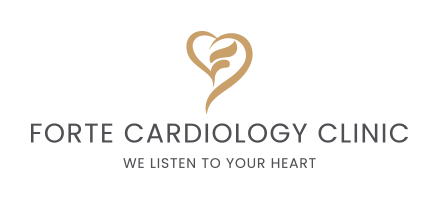Palpitations, the sensation of rapid, fluttering, or irregular heartbeats, can be disconcerting. Recognising the significance of palpitations is crucial as they may signal underlying heart rhythm disturbances or other cardiovascular issues.
Palpitations often stem from disruptions in the heart’s normal rhythm. Understanding how the heart maintains its rhythm provides insights into the potential causes of palpitations and their impact on cardiovascular health.
Overview of the Cardiac Conduction System
The heart’s electrical system coordinates its chambers’ rhythmic contraction and relaxation. Exploring the cardiac conduction system, comprising specialised cells and pathways lays the foundation for comprehending palpitations.
Role of the Sinus Node
The sinus node, often called the heart’s natural pacemaker, initiates electrical impulses that regulate the heart’s rhythm. Understanding the role of the sinus node is essential for discerning how disruptions in this system can lead to palpitations.
Normal Heart Rhythm
Delving into the normal heart rhythm helps establish a baseline for recognising deviations that may result in palpitations. This section will explore the coordinated electrical event sequence that ensures an effective and rhythmic heartbeat.
Common Heart Conditions Leading to Palpitations
Here are the specific heart conditions that can lead to palpitations:
Atrial Fibrillation
Atrial fibrillation (AFib) is a common heart rhythm disorder characterised by irregular and rapid atrial contractions. The chaotic electrical signals in the atria lead to an irregular heartbeat. Individuals with AFib may experience palpitations, often described as a quivering or fluttering sensation in the chest. AFib increases the risk of blood clots and stroke, making early detection and management crucial.
Supraventricular Tachycardia (SVT)
SVT is a group of rapid heart rhythms originating above the heart’s ventricles. This can include conditions like atrioventricular nodal reentrant tachycardia (AVNRT) or atrioventricular reentrant tachycardia (AVRT). SVT episodes can lead to palpitations, accompanied by a sudden onset of a rapid and regular heartbeat. While SVT is often benign, it can cause discomfort and anxiety.
Ventricular Arrhythmia
Ventricular arrhythmias involve irregular heartbeats originating in the heart’s ventricles. Conditions such as ventricular tachycardia (VT) or ventricular fibrillation (VF) can lead to palpitations. Ventricular arrhythmias are more serious and can be life-threatening, requiring immediate medical attention. Palpitations in these cases may be associated with a feeling of intense, rapid, or irregular heartbeats.
Non-cardiac Causes of Palpitations
Identifying and addressing non-cardiac causes of palpitations is crucial for effective management.
Anxiety and Stress
Palpitations are commonly linked to anxiety and stress. The body’s “fight or flight” response triggered by stress or anxiety can lead to an increase in heart rate and palpitations. Releasing stress hormones like adrenaline can stimulate the heart, causing it to beat faster or irregularly. Managing stress through relaxation techniques, mindfulness, or seeking professional help can often alleviate palpitations associated with anxiety.
Caffeine and Stimulant Use
The consumption of caffeine and stimulants can contribute to palpitations. Caffeine, present in coffee, tea, energy drinks, and certain medications, is a stimulant that can temporarily increase heart rate. Excessive intake of caffeine or sensitivity to stimulants may lead to palpitations. Limiting caffeine consumption or avoiding stimulants can reduce the frequency of palpitations in such cases
Symptoms and Characteristics of Palpitations with Cardiac Causes
Rapid or Irregular Heartbeat – Palpitations often manifest as a perception of a rapid, fluttering, or irregular heartbeat. The sensation may be noticeable in the chest or throat.
Fluttering Sensation – Individuals with cardiac-related palpitations may describe a fluttering or quivering sensation in the chest, often felt during an episode.
Pounding in the Chest – A forceful or pounding solid sensation in the chest is a common characteristic of palpitations associated with certain cardiac arrhythmias.
Increased Heart Rate – An actual increase in heart rate often accompanies palpitations. Individuals may feel that their heart is racing or beating faster than usual.
Episodic Occurrence – Palpitations with cardiac causes may occur in episodes, with distinct onset and cessation. Specific factors may trigger the episodes or may happen spontaneously.
Shortness of Breath – Some individuals experiencing cardiac-related palpitations may also report a sense of breathlessness or difficulty breathing during episodes.
Chest Discomfort – Palpitations can be associated with chest discomfort or pain. This may indicate an underlying cardiac condition and should be evaluated promptly.
Fatigue – Prolonged or frequent palpitations may contribute to fatigue. The heart’s irregular rhythm or increased workload during episodes can affect overall energy levels.
Dizziness or Lightheadedness – Cardiac-related palpitations may lead to feelings of dizziness or lightheadedness. This can occur due to the altered blood flow associated with certain arrhythmias.
Fainting (Syncope) – In severe cases, palpitations may progress to fainting episodes (syncope). This is a concerning symptom that requires immediate medical attention.
Paleness or Sweating – Some individuals may experience paleness or increased sweating during episodes of cardiac-related palpitations. Cardiovascular stress may trigger these physiological responses.
When to Seek Medical Attention
Knowing when to seek medical attention for palpitations is crucial to ensure timely evaluation and appropriate management. Individuals experiencing the following symptoms should seek prompt medical help:
Chest Pain or Discomfort – If palpitations are accompanied by chest pain, tightness, or discomfort, it could indicate a severe cardiac issue such as angina or a heart attack. Immediate medical attention is necessary.
Shortness of Breath – Palpitations accompanied by significant shortness of breath may suggest a cardiac condition that requires urgent evaluation. It could be indicative of heart failure or other serious issues.
Fainting (Syncope) – If palpitations lead to loss of consciousness (syncope), it is a critical situation that demands immediate medical attention. This may be a sign of a severe arrhythmia or other cardiac event.
Irregular Heartbeat with Other Symptoms – Palpitations accompanied by severe dizziness, nausea, profuse sweating, or palpitations that last for an extended period should be evaluated promptly.
Palpitations Persisting or Worsening – Medical evaluation is necessary if palpitations persist, recurrent, or worsen over time, despite attempts to address potential triggers or lifestyle modifications.
History of Heart Disease – Individuals with a known history of heart disease who experience new or changed palpitations should seek medical attention promptly. It may indicate a progression of their heart condition.
High-Risk Factors – Individuals with high-risk factors for cardiovascular diseases, such as a family history of sudden cardiac death, significant risk factors for coronary artery disease, or known structural heart abnormalities, should be vigilant and seek medical attention for palpitations.
Palpitations Associated with Other Serious Symptoms – If palpitations are accompanied by chest pain, shortness of breath, or fainting during physical activity or exertion, immediate medical attention is crucial.
Diagnostic Tests and Procedures for Palpitations
When experiencing palpitations, healthcare providers may recommend a series of diagnostic tests and procedures to identify the underlying cause. The selection of tests depends on the patient’s medical history, symptoms, and the suspected cause of palpitations. Common diagnostic approaches include:
Electrocardiogram (ECG or EKG) – A standard ECG records the heart’s electrical activity and helps identify abnormal rhythms or patterns associated with palpitations.
Holter Monitor – A portable device worn by the patient for 24 to 48 hours, continuously recording the heart’s electrical activity. This is useful for capturing intermittent palpitations that may not be detected during a brief office visit.
Event Recorder – Similar to a Holter monitor, an event recorder is worn for extended periods, often weeks to months. It allows recording specific events when symptoms, such as palpitations, occur.
Echocardiogram – A heart ultrasound that provides detailed images of its structure and function. It can help identify structural abnormalities, such as valve disorders, that may contribute to palpitations.
Stress Test – A stress test evaluates how the heart responds to physical activity or stress. It can help identify palpitations triggered by exertion.
Blood Tests – Blood tests may be conducted to check for cardiac damage or inflammation markers. They can help assess overall heart health and rule out certain conditions.
Cardiac MRI (Magnetic Resonance Imaging) or CT (Computed Tomography) Scan – These imaging studies provide detailed images of the heart’s structure and can identify abnormalities that may be linked to palpitations.
Electrophysiological Study (EPS) – An invasive procedure in which catheters are inserted into the heart to study its electrical conduction system. EPS is often used to identify and map the source of abnormal heart rhythms contributing to palpitations.
Tilt Table Test – This test evaluates how the heart and blood pressure respond to changes in body position. It helps diagnose conditions like vasovagal syncope associated with palpitations.
Ambulatory Blood Pressure Monitoring – Continuous monitoring of blood pressure over 24 hours to assess variations and detect any correlation between blood pressure changes and palpitations.
Implantable Loop Recorder – An implantable device that continuously monitors the heart’s electrical activity for an extended period. It is often used when other monitoring methods are inconclusive.
Blood Gas Test – In some cases, a blood gas test may be performed to assess oxygen and carbon dioxide levels, significantly if palpitations are associated with respiratory symptoms.







